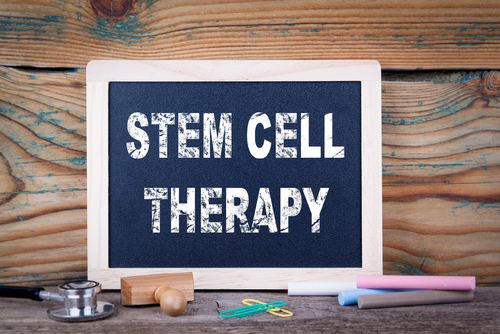Stem Cell Treatment Seen to Safely Aid Speech in ALS Patients in Small Study

Stem cells collected from a patient’s bone marrow and infused into the spinal fluid safely improved speaking abilities after 28 days for most of the 12 adults with amyotrophic lateral sclerosis (ALS) evaluated in a small study.
Its researchers recommend further investigation of this approach in treating speech difficulties in ALS, a common and early symptom of this neurological disease that is known as dysarthria.
The study, “Articulation recovery in ALS patients after lineage negative adjuvant cell therapy – preliminary report,” was published in the International Journal of Medical Sciences.
Current treatments for speech disorders in ALS, which is marked by the deterioration of nerve cells that control voluntary muscle movement (motor neurons), are medicines to ease muscle weakness, tongue twitching, and excess salivation, as well as speech therapy support.
Despite widespread use of these approaches, treatments that address speech problems in ALS are still limited.
The administration of stem cells — isolated from a patient then used as a treatment in that same person (autologous) — may help to trigger the release of neurological growth factors, called neurotrophic factors, provide support for motor neurons, and slow disease progression.
Researchers at Pomeranian Medical University in Poland conducted an open-label, Phase 1 clinical trial (NCT02193893) in 12 ALS patients, four women and eight men, between the ages of 21 and 65.
Bone marrow was collected from each person, and stem cells then isolated to include only lineage-negative cells (LIN-). These are immature stem cells and progenitor cells that have not yet become functioning blood cells.
The LIN- cells were returned to each patient via an infusion into the cerebrospinal fluid (CSF, the liquid that surrounds the brain and spinal cord) of the lumbar vertebrae of the lower spine.
Before the procedure, and 28 days after, patients were evaluated for speech using the Frenchay Dysarthria Assessment (FDA), a standardized test that relies on a nine-point rating scale, measuring oral structure, function, and speech.
CSF was collected to measure levels of various neurotrophic factors and pro-inflammatory proteins, both before cell infusion and 28 days later.
Two particular factors — nerve growth factor (NGF) and brain-derived neurotrophic factor (BDNF) — were tested in patients’ blood on the day of the infusion, and three and seven days later, and again at three months.
Of note, neurotrophic factors are signaling molecules that play an important role in the survival and growth of nerve cells.
Based on their FDA scores, patients were divided into two groups: group 1 was composed of eight patients who improved in five or more speech measures; the four patients in group 2 did not show such improvement.
Patients in group 1 were older (average age of 55.8), and had a shorter disease duration (average of 2.6 years), the researchers noted.
Compared to baseline (study start) measurements, seven out of the eight group 1 patients had marked improvements in phonation time — the time a person can say a vowel. Lip performance was enhanced in six people in group 1, and palate functioning and voice loudness improved in five of these patients.
Improvements were found in about 54% of the analyzed speech functions among group 1 patients, and 35% of those in group 2.
“It is noteworthy that tongue mobility was the only articulatory function that did not improve in all 12 patients,” the researchers wrote.
No significant pre- and post-treatment differences were seen in pro-inflammatory proteins in the CSF of either group. However, one such protein, called C3, was almost two times higher in group 2 patients at the study’s start.
At 28 days after the procedure, lower levels of the inflammation marker C-reactive protein in the CSF, particularly in group 1 patients, were found.
Baseline concentrations of the neurotrophic factor BDNF and of platelet-derived growth factor alpha (PDGF-AA) were higher in group 1 patients compared with group 2. At 28 days post-treatment, however, group 1 patients showed a significant decrease in concentrations of BDNF, PDGF-AA, and angiopoietin 2 (ANGP-2), and a downward trend in VEGF-A. No significant differences were found among those in group 2.
Growth factors are signaling molecules that, among other things, are capable of stimulating cell proliferation and differentiation.
“It remains unclear why, in parallel with the improvement of articulation, a statistically significant decrease in neurotrophins concentration was observed,” the researchers wrote.
BDNF blood levels in both groups reached were highest two to three days after the infusion, then steadily decreased. The nerve growth factor (NGF) followed a similar pattern in group 2 patients. No difference in the levels of BDNF and NGF were found between these groups.
“The outcomes of the LIN- cell application in ALS treatment of articulatory organs are promising,” the researchers wrote, and proved to be both safe and feasible.
“A short-lasting trophic effect of autologous LIN- administration could encourage repeated [cell] application in order to sustain their beneficial effects, however this approach needs further investigation,” they added.






